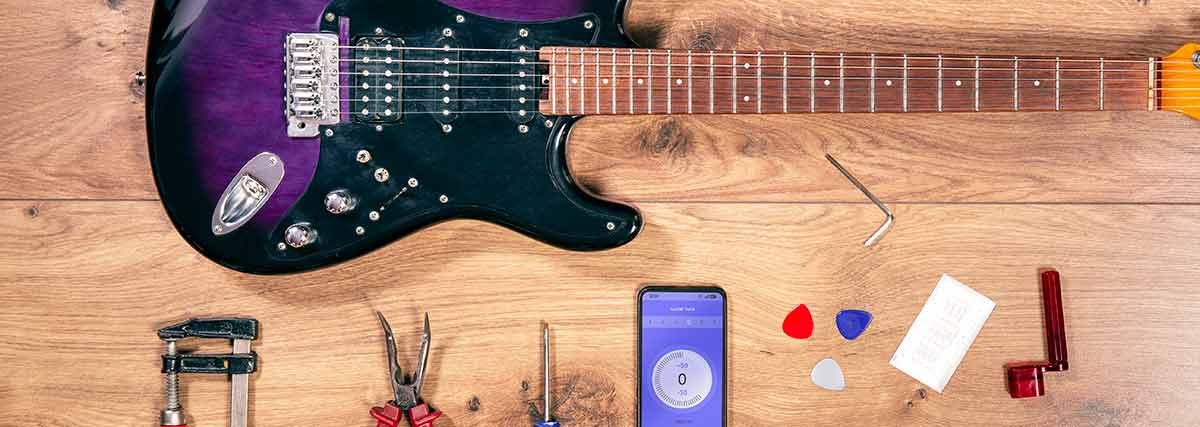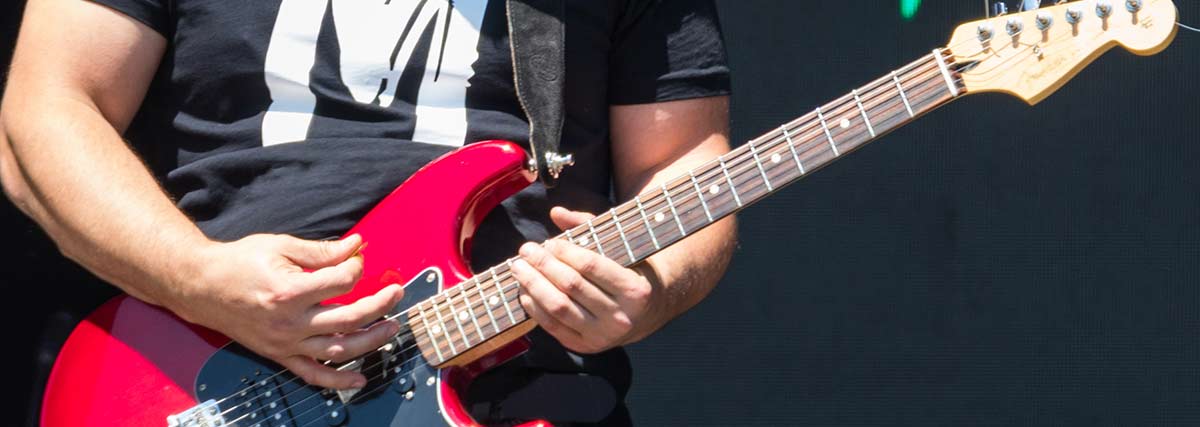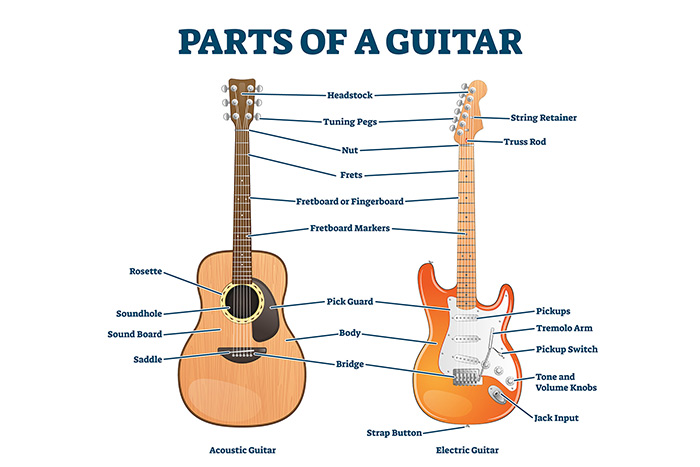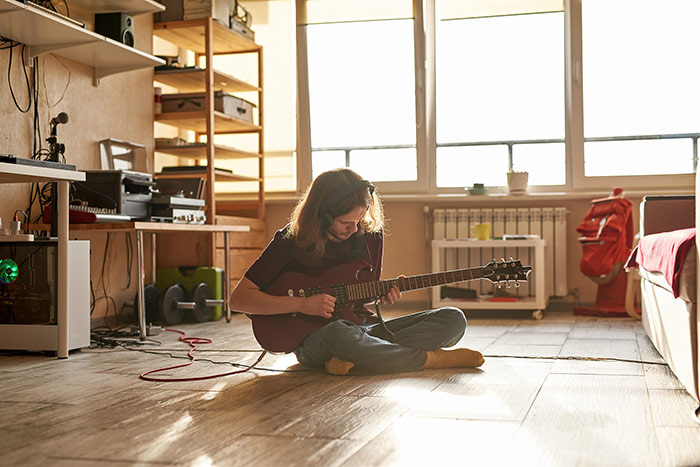What Is The ‘Action’?
The action is a very important factor on a players guitar as it has a huge affect on how the instrument feels to play. The action is the height between the strings and the fretboard of the guitar, with a higher action requiring more strength to push the strings down to produce a clear note. Generally this means that the higher the action, the harder the guitar is to play. It is a fine balance though, meaning a lower action is not always better. Different musical styles will demand a different setup on the instrument to cater to how the guitar is played (more on this below), and in some cases having the action too low can create other problems such as unwanted buzz from the string vibrating against the frets or the notes choking out because the string is too close to the fingerboard.
How Does The Musical Style Affect Where My Action Should Be Set?
A lower action is common in heavy rock, heavy metal and other related musical styles as some ‘shred’ techniques such as sweeping, tapping, and fast right hand picking will be much more achievable with a lower string height. These techniques became much more popular in the 1970’s and 80’s with pioneers such as Eddie Van Halen, Steve Vai and Yngwie Malmsteen coming onto the scene. Previously the guitar had not been pushed to its limits as much in terms of playing speed,
meaning that the guitars of the past had slightly higher actions and chunkier necks making them less of a shred machine. This led to new designs of guitars being produced by companies such as Ibanez, Jackson and Charvel that catered to this new and exciting playing style, which had lower actions and thinner necks with a flatter radius (the roundness of the fingerboard).
Just because lower actions will require less finger strength to produce a note does not mean that this will always be better, however! Many other styles such as rock, blues, pop and folk (and many more!) may actually benefit from a more medium action, as playing speed will not necessarily be the goal here. A higher action will actually allow the notes to ring more clearly as there isn’t any frets that get in the way of vibrations, which can allow the guitar to sound even better! Not only this, but if you play slide guitar you will actually need a higher action to allow the slide to glide across the strings smoothly to avoid rubbing against the frets which causes undesirable noise.
Acoustic guitars will most often benefit from a slightly higher action to most electric guitars as well, since the acoustic guitar is usually played quite differently to its electric counterpart. This will especially be the case if the player is playing mostly open chords that incorporate the open strings of the guitar, as this will allow the strings to ring more clearly as mentioned above.
How to Know If My Action Isn’t Set Up Correctly
If you’re not sure if your guitar is currently setup the way it should be, stop and have a think about how you’re currently finding the way you attack the notes on the guitar and how your hands feel after a practice session. If you’re trying to play a lot of bar chords in your practice and you’re finding that this is really hurting your hands or that you just can’t seem to produce a clear sounding chord, this could be because your action is currently too high. This is very common for students who purchase their guitar without having any adjustments done to it after they take it out of the box, or perhaps who buy a secondhand guitar that hasn’t been setup for years. Other uncontrollable factors such as climate can cause the neck of your guitar to warp slowly over time since it is made out of wood which is a relatively soft material, so even if your guitar has been setup at some point in its life it is very possible that it will need to be serviced more regularly.
On the flip side of the coin if you’re trying to improve your sweep picking but are finding that this is sounding messy and unclear, this could be because your string action is too high and is requiring too much pressure from the fingers to produce the notes in such a short space of time.

How Do I Adjust The Action on My Guitar?
Adjusting the action can be done a few ways on the guitar and may require small tweaks in each area to get the instrument feeling and playing smooth. Depending on the model of your guitar, adjusting the bridge to lower the saddles will lower the overall string height. On a Gibson style tune-o-matic bridge there are two screws on each side of the bridge which will adjust the entire saddle mechanism to change the action. Adjusting the truss rod will also be important to achieving the desired action and also to make sure that the guitars intonation is in tune. The truss rod is a long metal bar that runs down the internal cavity of the neck under the fingerboard and will adjust the neck angle on the guitar.
By tightening this rod (this is usually a screw hole on the headstock end of the neck, or where the neck meets the body on older style guitars) this will increase the tension and either straighten the neck out or create a ‘hump’ in the neck if adjusted too far. If your guitar already has a ‘hump’ or a back bow in the neck this could mean that the truss rod needs to be loosened to relieve some of the tension pulling on the strings to straighten it out or to create a slight bow in the neck.
Although there are many helpful resources online to help players learn the basics of adjusting their action, it may be wise to take your guitar to a professional luthier at your local music store to leave this job to a professional who will know exactly what adjustments your instrument needs. If you’re someone who likes to tinker you may find the maintenance and setup side of the guitar interesting, but if you’re not so inclined and want to get on with the playing then taking this to a professional to
have setup will ensure that your instrument is in the best playing condition that it can be.










